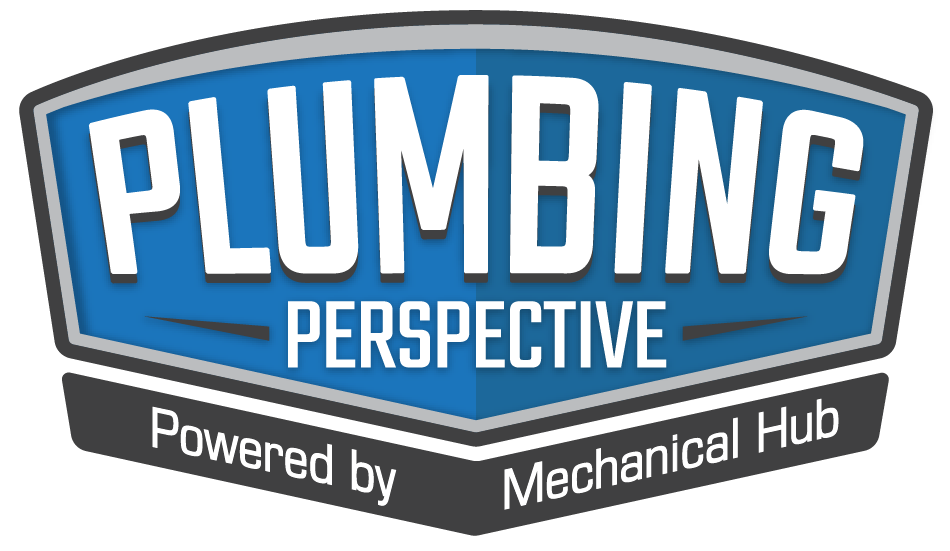Family businesses work when everyone is invested in a common goal. Half-hearted efforts and attitudes, jealousy or near-sightedness are the kiss of death when parents, siblings and in-laws are involved. But when all are engaged and aligned fruitfully, the result can be an uncommonly strong enterprise with long-term potential. AC Plumbing, Heating & Mechanical in Read more
Watts Water Technologies

Family businesses work when everyone is invested in a common goal. Half-hearted efforts and attitudes, jealousy or near-sightedness are the kiss of death when parents, siblings and in-laws are involved.
But when all are engaged and aligned fruitfully, the result can be an uncommonly strong enterprise with long-term potential.
AC Plumbing, Heating & Mechanical in Cleveland, OH, seems to have written the handbook for success in family business, though that wasn’t initially the plan. Tony Caruso started the firm with his wife LuAnn, in 1980, while also serving as a professional fireman.
Today, their children operate the 14-person company in Bedford Heights, OH.
Daughter Monica runs the office and her husband, Kelly Miller, is head of the HVAC shop. Anthony, like his father, is a professional fireman and paramedic, working 24 hours on, 48 off. When he’s not on duty at the firehouse, he’s the lead hydronic technician. Michael, who has a construction management degree, is the company’s lead plumber.
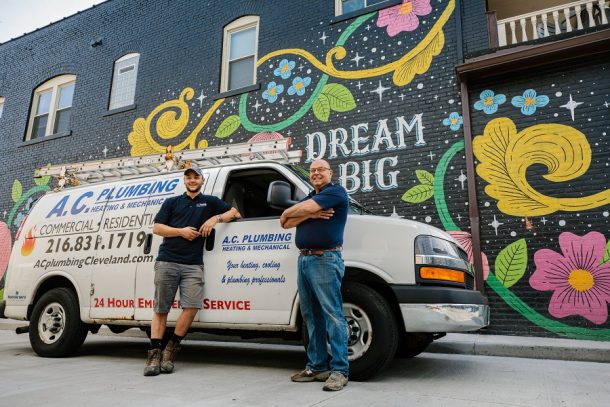 Under their direction and Tony’s mentorship and guidance, the business has flourished.
Under their direction and Tony’s mentorship and guidance, the business has flourished.
“I never envisioned all of this with my children,” said Tony Caruso. “I didn’t plan for them to join the company, let alone see the potential for them to propel us forward. But I’ve always believed this profession was something special. Having them join me has been a tremendous source of pride.”
Today, the company’s reputation for outstanding craftsmanship is validated by long-standing customer relationships, both commercial and residential. Some of those clients haven’t changed since the early years, when LuAnn was still writing invoices from notes that Tony scratched in the firehouse breakroom.
As Tony takes a back seat to day-to-day operations, it has given him time for volunteer work, and to tackle personal projects.
Restoring antiquity
“I’m drawn to old things, especially mechanical in nature,” said Tony. “Volunteering at a historic railway has been rewarding, especially when I can involve my grandchildren. I love to bring things back to their proper vintage and grace; cabooses, automobiles, buildings, etc.”
In part to scratch an itch and partly as a long-term investment, Tony and LuAnn purchased a 100-year-old building near downtown Cleveland in 2017. The Detroit Avenue area is slowly experiencing a renaissance of sorts. Young people are moving back in, small businesses are cropping up, and property values are plodding patiently upward.
Caruso bought the old building as a rundown residence. Police were frequently called to the address for one sort of disturbance or another. But with plenty of vision and know how – not to mention the involvement of a team of mechanical technicians – Tony and LuAnn had other plans.
They’re just now finishing the details on the 5,000 square-foot building. An upscale salon and spa occupies the ground level, with floor-to-ceiling windows along the sidewalk. The upstairs is divided into two apartments, with a third being added behind the salon.
Half of the basement slab received a pebble finish called Natural Stone. No sooner had the top coat cured before water backed up into the basement.
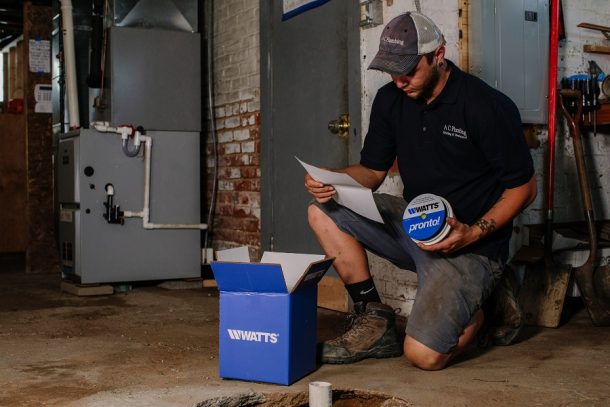 “We thought we’d need to hammer out a part of the new floor to access a clog in the old porcelain plumbing, and install a drain at that spot,” said Caruso. “So we purchased a Watts Pronto!™ floor drain because of the ability to do post-pour adjustment between the concrete and finished floor.”
“We thought we’d need to hammer out a part of the new floor to access a clog in the old porcelain plumbing, and install a drain at that spot,” said Caruso. “So we purchased a Watts Pronto!™ floor drain because of the ability to do post-pour adjustment between the concrete and finished floor.”
Then Michael and Zac Wood, one of the company’s plumbers, scoped the pipe. It became apparent that the clog could be remedied without digging up the floor. Jagged edges on the old cast iron pipe within a fitting were catching sewer debris. By snaking the pipe with a heavy cutter tip, the issue was remedied.
In an adjacent basement room without finished flooring, the building had a plumbing stack coming down from the first floor. It was no longer in use, and just in the way.
“We wanted to remove the stack for more storage space,” said Michael. “But in a building like this, where the use of occupied space can easily change in the future, we try not to eliminate sewer connections. We already had the Pronto! drain in the van. It’s a little overkill for an unfinished slab, but it definitely served the purpose.”
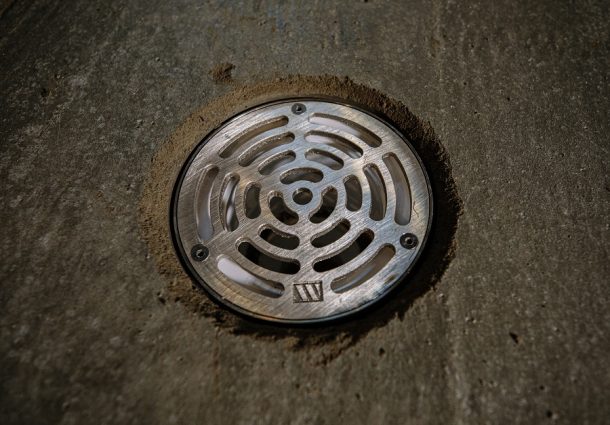 Zac hammered-out the floor, installed a new trap, then poured new concrete and installed the drain.
Zac hammered-out the floor, installed a new trap, then poured new concrete and installed the drain.
“The real benefit of the Pronto! floor drain is that the drain can be adjusted twice,” said Zac. “The basin can be raised or lowered to match the initial concrete pour, and then the strainer can be adjusted to match the finished floor grade. It comes with a set of shims to get a perfect level. On this installation, though, we only needed to make one adjustment. Using the drain’s integral bubble level, I was able to plumb-in the drain perfectly just by adjusting it after making my PVC connection.”
The Watts Pronto! floor drain is available in either cast iron or PVC, and comes in grate sizes of 5”, 6” or 8”.
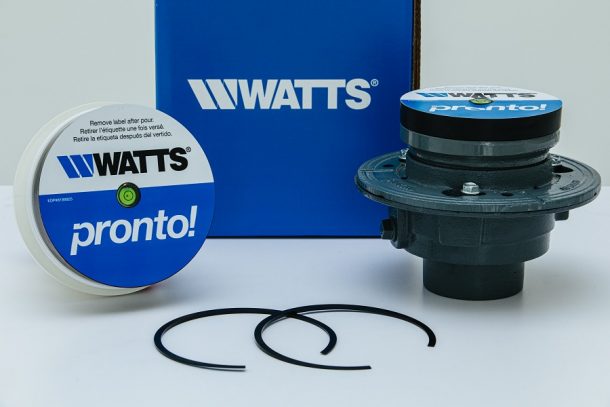 “We’ve used a variety of Watts products since I started the company,” said Tony. “Our hydronic installations are covered in Watts valves, and we often use tekmar controls. We also like their backflow assemblies. We picked the Pronto! drain, despite it being a completely new product, based on the quality of products we’ve come to expect from the brand.”
“We’ve used a variety of Watts products since I started the company,” said Tony. “Our hydronic installations are covered in Watts valves, and we often use tekmar controls. We also like their backflow assemblies. We picked the Pronto! drain, despite it being a completely new product, based on the quality of products we’ve come to expect from the brand.”
With the plumbing issues resolved at the investment property, the Carusos can focus on finishing the final rental unit. The building is now an integral part of the Detroit Avenue urban revitalization effort, inside and out. Two walls on the building feature giant murals, a theme throughout the area. It’s another source of pride.
Doing right
“Not everyone at AC Plumbing is family, but they may as well be,” said Tony. “Every member of our team is vital. We hire people that want to provide service. That is, in my judgement, the finest pursuit. The responsibility to our team is never to do less than the right thing. That may include engineering the correct system, performing the proper replacement or repair, or taking responsibility for mistakes. Good business ethics.”
Tony’s quick to note that the industry and market is changing rapidly, and is thankful that his children are proactively keeping pace with it. Clients have become much more astute in regard to what they want in their homes. Systems are now “on demand,” “green” or otherwise designed primarily for comfort.
“The daily challenge we now face is installing a system that never compromises safety, comfort or efficiency,” Tony continued. “In years’ past, things were simpler, and efficiency wasn’t as critical. These factors have truly raised the bar on what it means to be a plumbing or HVAC professional. Fortunately, manufacturers and reps are providing more support than ever before.”
“I feel that being trusted in a customer’s home is the greatest responsibility,” Tony said. “As my career winds down, I feel that my family has that same passion. At the end of the day we can all rest knowing we’ve done what is dutifully right.”

St. Pauls, N.C.—Recently, members of the trade press were greeted by Watts Water Technologies executives for an exclusive tour of the company’s new Watts Works Learning Center. At the new, 3,000-sq.-ft. learning center, customers, channel partners, sales representatives, employees and other visitors can obtain hands-on and classroom training for a wide range of Watts products Read more
St. Pauls, N.C.—Recently, members of the trade press were greeted by Watts Water Technologies executives for an exclusive tour of the company’s new Watts Works Learning Center. At the new, 3,000-sq.-ft. learning center, customers, channel partners, sales representatives, employees and other visitors can obtain hands-on and classroom training for a wide range of Watts products and solutions, which include Orion chemical piping systems, BLÜCHER stainless steel drainage, Watts cast iron drainage, Watts rainwater harvesting solutions, and Mueller Steam Specialty products, among others.
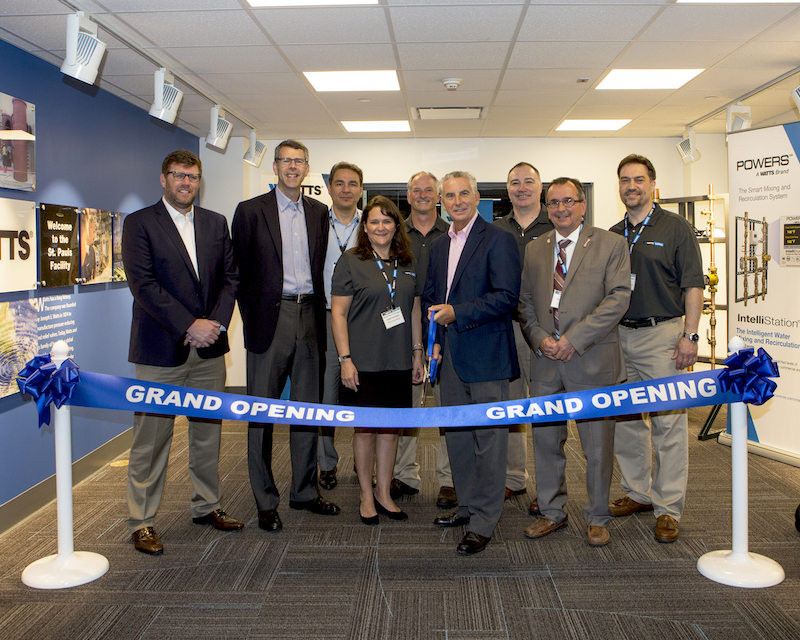
From l to r: left to right: Andrew Windsor, Watts Senior Vice President, Sales – Watts; Mark Hamilton, VP Drains, Americas – Watts; Roberto Vengoechea, Senior VP, Fluid Solutions – Watts; Jackie Comiskey, Indirect Sourcing Manager – Watts; Dennis Fackler, Facility Engineer – Watts; John Palotta, Vice President, Carolinas Operations – Watts; Chris Jamieson, Vice President, Marketing & Business Development – Watts; Gerald Weindel, Mayor, St. Pauls NC; Greg Gyorda, Director, Customer & Employee Training – Watts.
“This newest world-class Learning Center is part of our ongoing investment in education and training for our customers and our commitment to remaining a leader in training the industry,” said Greg Gyorda, Director, Customer & Employee Training.
“Through the Watts Works learning program, we are helping customers enhance their knowledge of a broad range of plumbing, drainage, HVAC, and water quality solutions,” he said. “In our hands-on demonstration labs and comprehensive classes led by experienced instructors, customers are able to enrich their professional skills.”
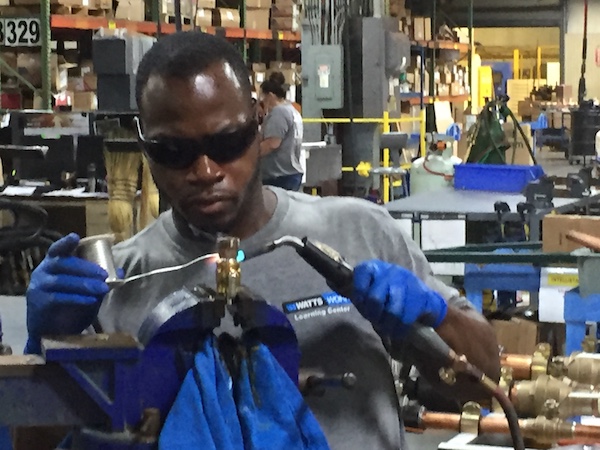
While taking the tour of the 220,000-sq.-ft. St. Pauls facility, products such as drains, strainers, butterfly valves are made, and the assembly of the IntelliStation digital mixing system, seen here.
Visitors to the St. Pauls Center—located within the 210,000-sq.-ft. St. Pauls manufacturing facility that employs 220 people—can also tour the factory to production of Orion Chemical Piping Systems, the Powers IntelliStation Digital Mixing System, Watts Manifolds and RainCycle Rainwater Harvesting systems, Mueller Steam Strainers, Check Valves, and many other products.
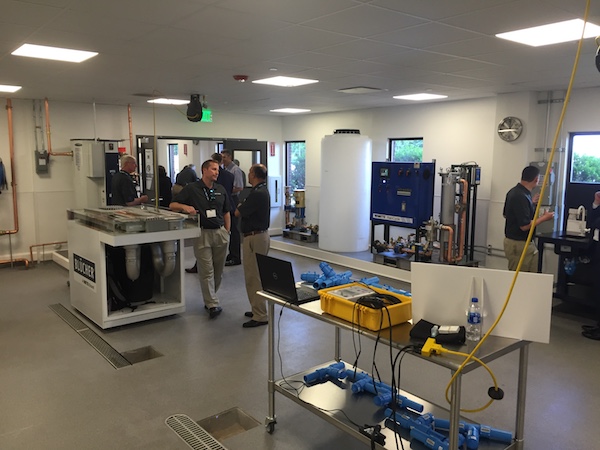
A look into the hands-on learning center.
According to VP Carolina Operations, and tour guide for the day, John Palotta, Watts has made a tremendous investment in time and money with the new Center. “Success is reflected in the products and support, but all of that would be nothing without the people here,” says Parotta.
The St. Pauls Center is the third Watts Works Learning Center in the U.S., joining Centers in North Andover, Mass., and Woodland, Calif.
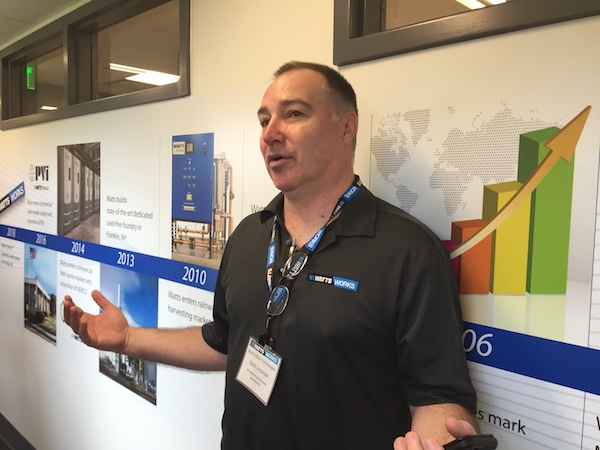
Chris Jamieson, Vice President, Marketing & Business Development, gives a brief history of the company to start the tour.
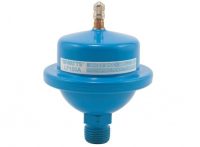
At some homes and buildings, there’s an obnoxious echo that sounds long after the last hammer is swung. In some instances, it’s as forceful as a sonic boom. Water hammer, and a variety of somewhat lesser annoyance — water chatter — are terms that describe the audible traffic jam going on inside the pipes of Read more
At some homes and buildings, there’s an obnoxious echo that sounds long after the last hammer is swung. In some instances, it’s as forceful as a sonic boom.
Water hammer, and a variety of somewhat lesser annoyance — water chatter — are terms that describe the audible traffic jam going on inside the pipes of some plumbing systems. But its affects aren’t limited to annoying noises. Water hammer can destroy pipe and fittings, regardless of the size of the system.
 The destructive forces, pounding noises and vibration that can develop in a piping system when a column of liquid, flowing through a line, is abruptly stopped. The tremendous forces generated at the stopping point can be compared to an explosion.
The destructive forces, pounding noises and vibration that can develop in a piping system when a column of liquid, flowing through a line, is abruptly stopped. The tremendous forces generated at the stopping point can be compared to an explosion.
“After a sudden valve closure, a shockwave passes back and forth through the water column at roughly 4,500 fps, causing the vibrations known as water hammer,” said Steve Hamoen, at Zonelife Inc., a design/build plumbing and mechanical installation and engineering firm based in Cambridge, Ontario.
Water hammer can cause damage throughout the piping network by the sudden shaking, pipe expansion and contraction. Damage can happen all along the system, especially with copper piping, not just at the point of stoppage. The weakest points in the system, typically where fittings are soldered, often absorb the majority of the impact.
If left unchecked, water hammer can go from being an annoyance to being an expensive hazard if leaks develop.
According to Lisa Yezzell, national product manager for Watts Water Technologies, the most common cause of water hammer in a domestic water system is the quick closing of a valve within a plumbing fixture. Sometimes it’s a fast-acting solenoid valve inside a major appliance like a washing machine, but spinning a bathroom fixture closed quickly can create the same annoying result.
 “When a piped supply of water — at 50 to 70 psi — is in motion and then suddenly stops, a sonic wave surges backwards toward the supply,” said Yezzell. “The problem can be especially challenging if the pipe is made of rigid copper,” she added. “Modern PEX plumbing systems are more forgiving because the tubing is pliable and much of the shock is absorbed. No matter what the pipe material is, it’s the valves and fittings that are often the weak link.”
“When a piped supply of water — at 50 to 70 psi — is in motion and then suddenly stops, a sonic wave surges backwards toward the supply,” said Yezzell. “The problem can be especially challenging if the pipe is made of rigid copper,” she added. “Modern PEX plumbing systems are more forgiving because the tubing is pliable and much of the shock is absorbed. No matter what the pipe material is, it’s the valves and fittings that are often the weak link.”
“New, high-efficiency appliances, primarily dish washers and washing machines, conserve water by cycling more often for shorter periods of time,” she continued. “As the number of cycles increase, the wear on piping components increases due to water hammer.”
The best solution is proper placement of a water hammer or ‘shock’ arrestor. Locate the device on the supply line as close to the fixture that causes the problem as possible. Typically, these are mounted in the wall very near where the line protrudes from the wall, going to the fixture. Watts water hammer arrestors are available in a wide range of models suited for installations with icemakers, lavatory supply tubes, washing machines and dishwashers in sizes from 3/8” to 1”.
The speed of the valve closure, especially during the last 15% of valve’s closing, is directly related to the intensity of the surge pressure. An approximate pressure rise of 60 times the fluid’s velocity is produced. So, water traveling at 10 fps could produce a shock pressure of 600 PSI.
Water hammer problems became so pervasive in Canada’s Quebec Province that the installation of water hammer arrestors was mandated. For the past five years, building codes now demand that all new homes must include the installation of the devices.
Mike Breault, product manager with Watts Canada, based in Burlington, Ontario, said that the mandating of water hammer arrestors stems chiefly from the need to solve widespread water hammer problems in new home developments.
“Quebec is a fast-growing area,” explained Breault. “There are large, new subdivisions that place a strain on the water supply infrastructure. That leads to water pressure irregularity, so pressure-boosting stations are being installed. But this introduces a new challenge: higher-than-normal water pressure with many homes getting 80 psi or higher. We’ve learned of some homes receiving water pressure in excess of 105 psi.”
The higher the pressure within the piped system, the bigger the water hammer potential, and the severity of its effects.
Temporary relief of water hammer shock can be achieved by installing a correctly-sized air chamber, generally a standpipe. Although effective for a short amount of time, air chambers lose their effectiveness rather quickly as the air is absorbed through turbulence. Short of draining the entire pipe system and removing the chamber, there is no way to replenish the air in the chamber.
“The only true, permanent solution to lessen the damage caused by water hammer is to install an engineered water hammer arrestor/surge absorber,” said Breault.
